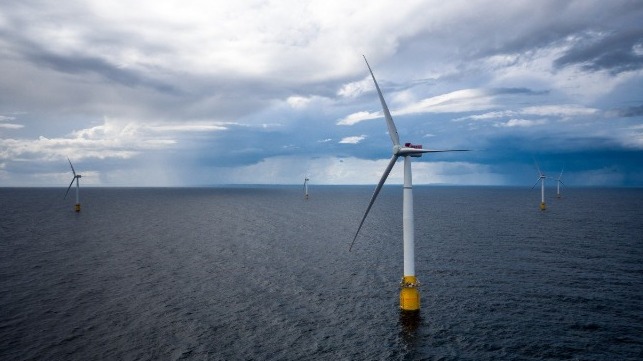Report: Floating Offshore Wind Faces Delays in Rollout

The floating offshore wind revolution will not be coming quite as fast as expected, according to a new market outlook released by analysts TGS-4C Offshore.
A year ago, TGS-4C predicted that there would be 16 GW of floating offshore wind capacity in operation or under construction around the world by the end of the decade, and no less than 48 GW by 2035. Over the last year, however, the timeline for many projects has slipped. Developers have set a slower-than-expected pace in securing construction permits and offtake contracts, and this is dragging on the expected startup date for future projects. The consultancy now expects to see about 12 GW of capacity by 2030 (4 GW less than last year's forecast) and 39 GW by 2035 (9 GW less).
"Floating wind holds a lot of promise, but delivery is challenging. Offtake visibility is currently limited, and regulatory uncertainty is high in key emerging floating markets. There are many countries whose processes have not yet been tested and matured through bottom-fixed wind. Consequently, we don’t expect the build-out of floating wind to scale significantly until after 2030," said TGS-4C director of research Richard Aukland.
In addition to delays, the cost structure of floating wind is likely to stay higher for longer. TGS-4C has revised its projections for the long term levelized cost of energy (LCOE) and capex for floating wind development, and it still expects costs to come down, but more slowly than previously forecast because of the rising cost of supplies and capital. The consultancy now expects floating wind's LCOE to come in at about $90-110 per MWh by 2030, roughly twice the current price of onshore solar. This could eventually come down to as little as $55 per MWh as the technology scales up, but the timeline for achieving this cost savings is 20 years out.
The majority of the world's offshore wind potential is located in deep waters, where the extra expense and complexity of floating foundations will be required. The reduced momentum for floating wind will have an effect at the margins for the availability of green power, particularly for nations with strong deepwater wind potential in their coastal waters. The UK, Ireland, Norway, South Korea, Japan and the U.S. West Coast are all in line to develop floating wind at scale in the decades to come, assuming that the project economics and the regulatory environment align.
No comments:
Post a Comment